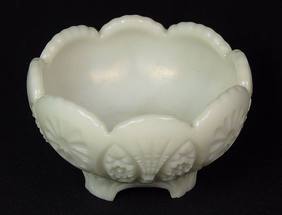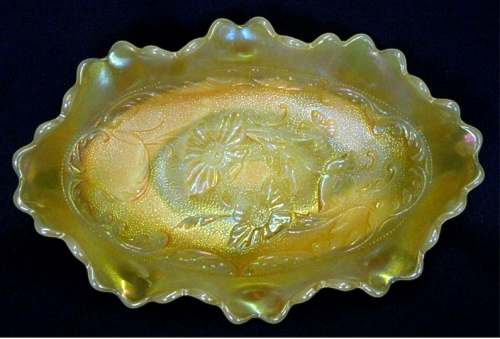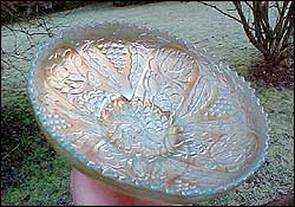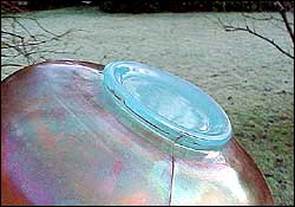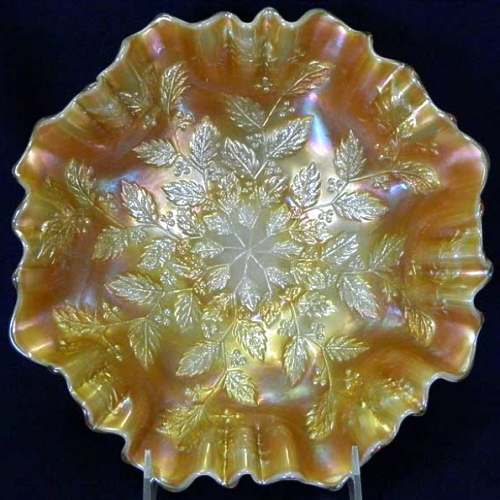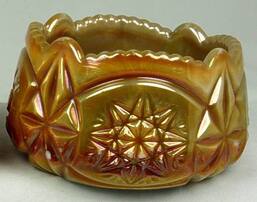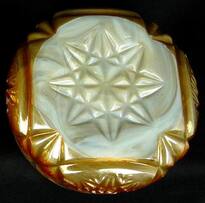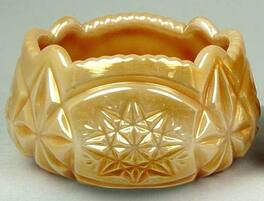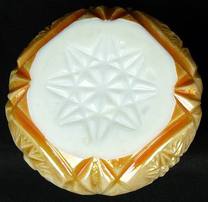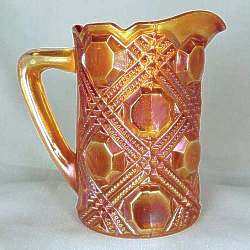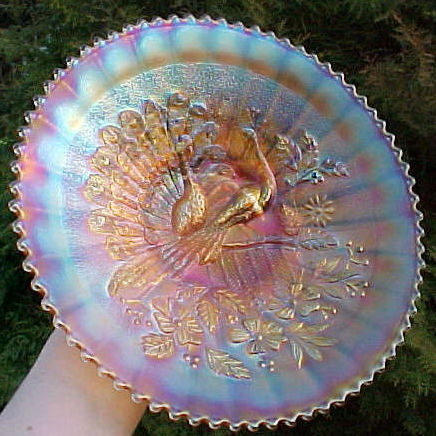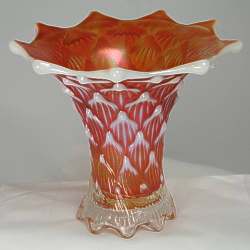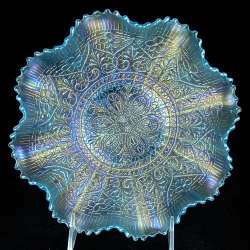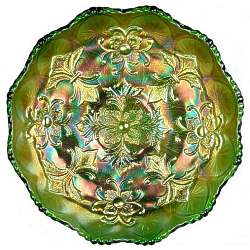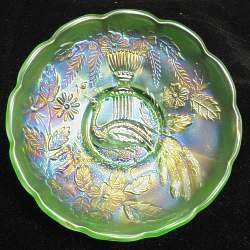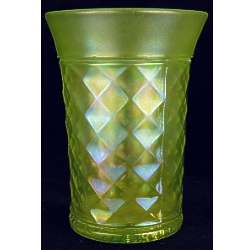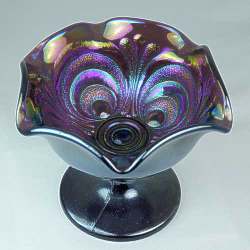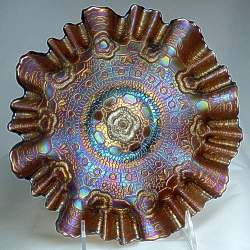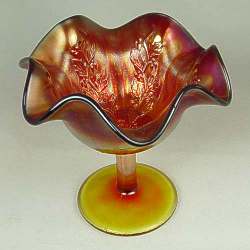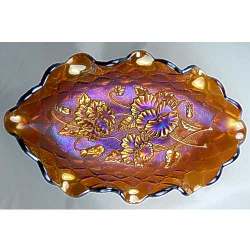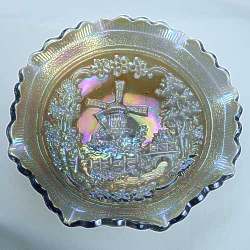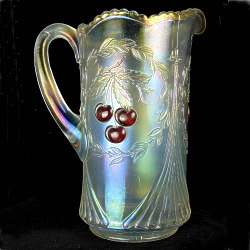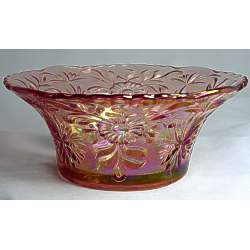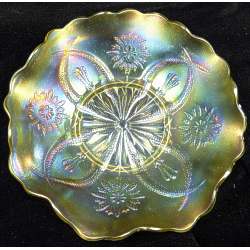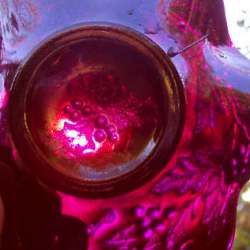Carnival Glass Colours - Opaque and Semi-opaque (translucent)
First let’s understand exactly what milk glass, custard glass and moonstone are.
Milk Glass: an opaque white glass, but milk glass collectors use the term to include blue, pink etc as long as it is opaque. For our purposes in Carnival we usually take it to be the white version but blue milk glass is also known iridised. Often used tin oxide to make it opaque.
Apply iridescence to milk glass and you get:
- Marigold on milk glass
- Pearl, that is pastel iridescence on milk glass
- Iridised blue milk glass
- Smoke iridescence on milk glass
Milk Glass: an opaque white glass, but milk glass collectors use the term to include blue, pink etc as long as it is opaque. For our purposes in Carnival we usually take it to be the white version but blue milk glass is also known iridised. Often used tin oxide to make it opaque.
Apply iridescence to milk glass and you get:
- Marigold on milk glass
- Pearl, that is pastel iridescence on milk glass
- Iridised blue milk glass
- Smoke iridescence on milk glass
Custard Glass: as the name implies, is more yellowish than milky, and it is opaque. Uranium was added as a colourant to make it pale yellow and so it GLOWS under UV light. A black light (UV) test will show the difference between milk glass (no glow) and custard (glow).
Apply iridescence to custard glass and you get:
- Marigold on custard
- Pearlised Custard – a pastel iridescence
Moonstone: imagine a glass of clear water…now drizzle in a very tiny bit of milk. That’s like a moonstone, translucent, not opaque. It can be clear or blue.
Apply iridescence to moonstone glass and you get:
- Marigold on moonstone
- Pastel iridescence on moonstone
- Persian blue - iridised blue moonstone. It can have marigold/bronze or pastel iridescence. Below are two photos of a Fenton Persian blue Lotus and Grape bowl taken on a frosty day in England The shot on the right shows the translucency of the base colour.
|
Slag
Slag glass has mixed colours and streaky looking base glass – it is possible to find base glass with the odd streak of other colours in it, but true slag is very distinct and is a mixture of a lighter opaque shade (white) plus another colour, such as: - Sorbini is the name for Northwood’s blue and white slag - Caramel / brown and white slag from Riihimaki. Pictured here are two Riihimaki Starburst nut bowls. The one on the left is caramel slag (only a few are known to date), and on the right is one in marigold on milk glass.
The lower image in both cases shows the base glass of the bowl above it. The difference between the two base glass colours is clearly demonstrated. |
Click on any image to look at more colours

